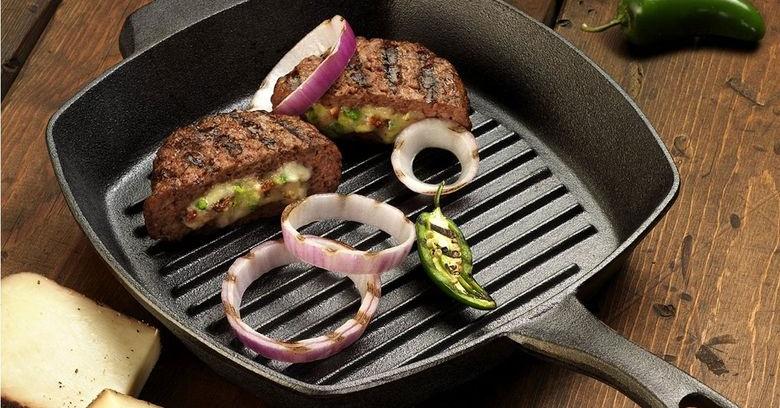Grill pans are a versatile and essential addition to any kitchen, offering a convenient way to achieve those coveted grill marks and smoky flavours indoors. However, choosing the perfect grill pan can take time and effort with the wide array of options available. In this comprehensive guide, you will navigate the key considerations to help you select the grill pan that best suits your needs.
Material Matters
The first step in choosing the perfect grill pan is to consider the material it’s made from. Grill pans come in various materials, each with its own set of advantages:
Cast Iron: Known for its exceptional heat retention and even distribution, cast iron grill pans are a top choice for achieving those classic grill marks. They require seasoning and maintenance but reward you with outstanding performance and durability.
Non-Stick Coated: Non-stick grill pans are user-friendly and require less oil for cooking. They are easy to clean and maintain, making them a popular choice for those seeking convenience in the kitchen.
Stainless Steel: Stainless steel grill pans are highly durable and resistant to staining or discoloration. They offer a sleek and modern appearance, making them suitable for stovetop and oven use.
Size and Shape
Grill pans come in diverse sizes and shapes, allowing you to choose one that aligns with your cooking needs and kitchen space. Consider the number of servings you typically prepare and the size of your stovetop or oven when selecting the right dimensions. Rectangular grill pans are versatile, while round ones are ideal for smaller dishes or single servings.
Cooking Style
Think about your preferred cooking style and the dishes you like to prepare. If you enjoy searing steaks, burgers, or vegetables, a grill pan with prominent ridges is excellent for creating grill marks and imparting a smoky flavour. On the other hand, if you want a multi-purpose pan for sautéing, frying, and grilling, a flat grill pan with a smooth surface may be more suitable.
Heat Source Compatibility
Ensure that the grill pan you choose is compatible with your heat sources. Most grill pans are designed for stovetop use, but some can also be used in the oven. Verify the manufacturer’s guidelines to confirm their compatibility with your cooking appliances.
Handle and Weight
Consider the handle design and weight of the grill pan. A pan with a long, ergonomic handle makes manoeuvering and flipping foods easier. Additionally, assess the overall weight of the pan, as heavier options may require more effort to handle but often offer superior heat retention.
Maintenance and Care
Think about your willingness to invest time in maintenance. Cast iron grill pans, for instance, require regular seasoning and should be dried thoroughly after each use to prevent rust. Non-stick pans are generally low-maintenance but may need replacement when the non-stick coating wears off.
Budget-Friendly Choices
Grill pans are available at various price points. Establish a budget that suits your preference. While premium options may offer exceptional durability and performance, there are also budget-friendly choices that provide satisfactory results.
Reviews and Recommendations
Finally, consider reading reviews and seeking recommendations from trusted sources or fellow cooking enthusiasts. Real-world experiences and feedback from other users can give valuable insights into the performance and durability of specific grill pans.
Conclusion
Choosing the perfect grill pan involves carefully assessing your cooking style, kitchen space, and personal preferences. The material, size, shape, heat source compatibility, handle design, weight, maintenance requirements, and budget are all critical factors to consider. By considering these considerations and exploring the diverse range of grill pans available, you can confidently select the ideal pan that will elevate your indoor grilling experience to new heights. Happy grilling!
